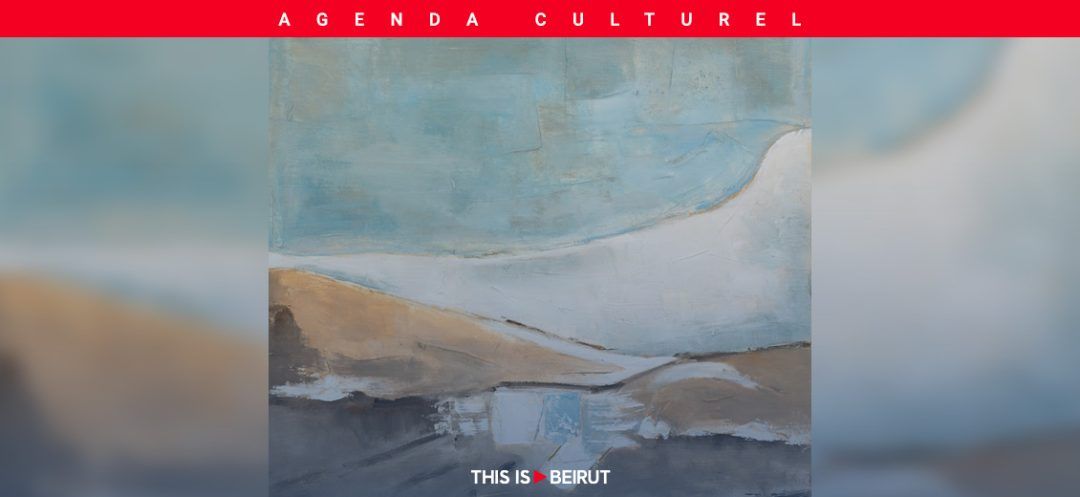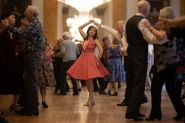
On Thursday, January 4, 2024, at 6:00 PM, the vernissage celebrating the pictorial expression of artist Leyla Nabbout Wakim will take place at Beit Beirut. The curation is jointly conducted by Randa Sadaka, author of the retrospective catalogue “Leyla Nabbout Wakim: The Blossoming of a Delicate Fauvist-Inspired Pictorial Language” (Dergham Editions) and gallery owner Kalim Bechara. The exhibition will continue until January 9, 2024.
Journey of Leyla Nabbout Wakim
Leyla Nabbout Wakim was born in Beirut in 1940. Educated by the Franciscan nuns, she furthered her education at the Italian cultural center Dante Alighieri, where, from 1958 to 1962, her teacher was none other than the famous painter, sculptor and draftsman Guvder.
Creatively active on all fronts, the young woman was trained by Russian painter Michel Horoche between 1960 and 1963. He taught her the technique of tempera, which involves mixing colors in the form of pigments with eggs.
A painter of nature interested in various artistic manifestations, she practiced floral anatomy with Professor Briѐs at the Vendôme Hotel and then at the ALUMNI Club of AUB in Beirut. The artist held both individual and collective exhibitions in Lebanon.
Married to architect Robert Wakim since 1967, the visual artist was encouraged by him to continue her experiments. Expanding her research, she applied herself to primitive batik (painting on fabrics) derived from the Indonesian method of tjanting, a major element of this refined drawing technique. In 1990, she moved to Morocco for eight years and regularly exhibited in her native country.
Her works evolved from a neoclassical to a Fauvist stylistic period. Leyla Nabbout Wakim’s works are included in the collection of the Lebanese Ministry of Culture. Her canvases dissect botanical anatomy with a love of simplified structure, paying homage to our land of colors.
[gallery link="none" size="large" ids="212809,212810,212808"]
Exhibition
Sequential Work The artist’s first period captures nature in a neoclassical approach. Her views range from 1963 to 1967. From 1968 to 1973, Leyla Nabbout Wakim produced works using a palette knife, revealing various themes such as silhouettes, seascapes and trees. From 1992 to 2022, Fauvism governed her creation. Her fanciful, highly textured abstractions assume a certain originality, like a synthesis of her emotions and experiences—similar to a travel journal. The result is distinguished by the use of a vigorous palette.
The Obsession with Oil Her demanding paintings are revealed in thin colored layers that filter light. Capturing the strength of nature in situ; the beauty of the environment is captured on the spot with an intrinsically intimate touch linked to the medium, conferring a matter of excellence to the gesture.
Tempera - Primitive Batik This is a painting process in tempera where the binder is an emulsion containing aqueous and oily substances, such as eggs. In the 20th century, Diego Rivera, Frida Kahlo and Jackson Pollock notably used the technique. The canvases offer a fluid, transparent painting. Leyla Nabbout Wakim’s gesture is nervous and compact, inspired by the jerky life of her country.
The Passion for Wood The artist seeks a natural support; she paints on burlap in the manner of great painters of their time. She also sublimates wood, which has a history, by playing with the material and highlighting its small marks of wear, its veins and its relief. Passionate about her surroundings, Leyla Nabbout Wakim draws inspiration from the magnificent flora of Lebanon for her oil creations.
Penned by Randa Sadaka
https://www.agendaculturel.com/article/la-chatoyante-palette-chromatique-de-leyla-nabbout-wakim-a-beit-beirut
Journey of Leyla Nabbout Wakim
Leyla Nabbout Wakim was born in Beirut in 1940. Educated by the Franciscan nuns, she furthered her education at the Italian cultural center Dante Alighieri, where, from 1958 to 1962, her teacher was none other than the famous painter, sculptor and draftsman Guvder.
Creatively active on all fronts, the young woman was trained by Russian painter Michel Horoche between 1960 and 1963. He taught her the technique of tempera, which involves mixing colors in the form of pigments with eggs.
A painter of nature interested in various artistic manifestations, she practiced floral anatomy with Professor Briѐs at the Vendôme Hotel and then at the ALUMNI Club of AUB in Beirut. The artist held both individual and collective exhibitions in Lebanon.
Married to architect Robert Wakim since 1967, the visual artist was encouraged by him to continue her experiments. Expanding her research, she applied herself to primitive batik (painting on fabrics) derived from the Indonesian method of tjanting, a major element of this refined drawing technique. In 1990, she moved to Morocco for eight years and regularly exhibited in her native country.
Her works evolved from a neoclassical to a Fauvist stylistic period. Leyla Nabbout Wakim’s works are included in the collection of the Lebanese Ministry of Culture. Her canvases dissect botanical anatomy with a love of simplified structure, paying homage to our land of colors.
[gallery link="none" size="large" ids="212809,212810,212808"]
Exhibition
Sequential Work The artist’s first period captures nature in a neoclassical approach. Her views range from 1963 to 1967. From 1968 to 1973, Leyla Nabbout Wakim produced works using a palette knife, revealing various themes such as silhouettes, seascapes and trees. From 1992 to 2022, Fauvism governed her creation. Her fanciful, highly textured abstractions assume a certain originality, like a synthesis of her emotions and experiences—similar to a travel journal. The result is distinguished by the use of a vigorous palette.
The Obsession with Oil Her demanding paintings are revealed in thin colored layers that filter light. Capturing the strength of nature in situ; the beauty of the environment is captured on the spot with an intrinsically intimate touch linked to the medium, conferring a matter of excellence to the gesture.
Tempera - Primitive Batik This is a painting process in tempera where the binder is an emulsion containing aqueous and oily substances, such as eggs. In the 20th century, Diego Rivera, Frida Kahlo and Jackson Pollock notably used the technique. The canvases offer a fluid, transparent painting. Leyla Nabbout Wakim’s gesture is nervous and compact, inspired by the jerky life of her country.
The Passion for Wood The artist seeks a natural support; she paints on burlap in the manner of great painters of their time. She also sublimates wood, which has a history, by playing with the material and highlighting its small marks of wear, its veins and its relief. Passionate about her surroundings, Leyla Nabbout Wakim draws inspiration from the magnificent flora of Lebanon for her oil creations.
Penned by Randa Sadaka
https://www.agendaculturel.com/article/la-chatoyante-palette-chromatique-de-leyla-nabbout-wakim-a-beit-beirut
Read more




Comments